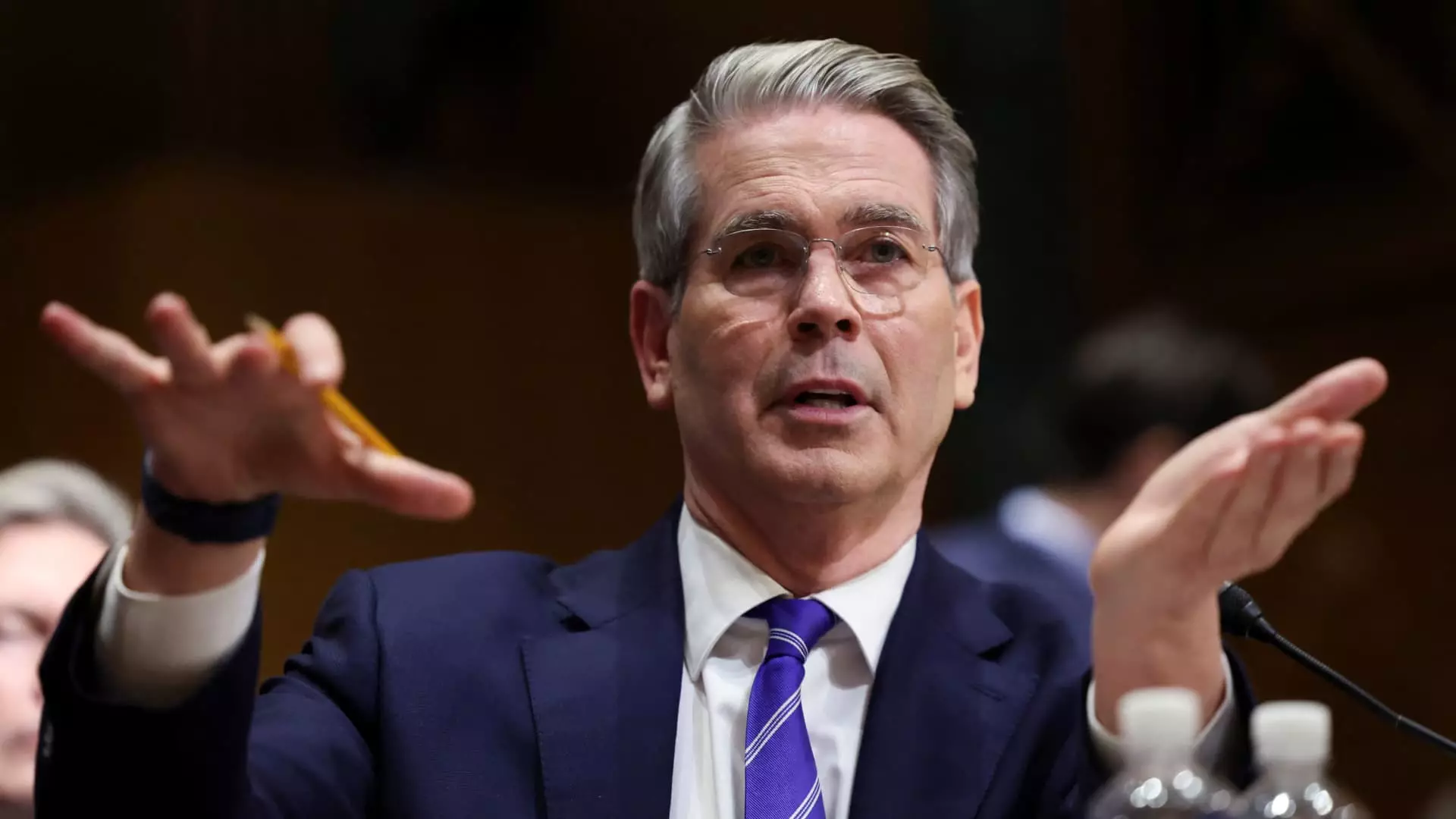As the global stage transforms into a battleground of economic strategies and manipulations, the recent comments by U.S. Treasury Secretary Scott Bessent underscore the audacity and arrogance we’re witnessing in the ongoing trade conflict between the United States and China. Characterizing China’s response as a “bluff” isn’t merely analysis; it reveals a profound misjudgment about the intricacies of international relations and economic interdependence. Though he contends that the U.S. possesses an undeniable advantage, the ramifications of such a combative stance can have far-reaching consequences beyond mere statistics.
Bessent argues that China’s tariff escapades are akin to “playing with a pair of twos,” suggesting that America’s exports amount to a mere fraction of the trade relationship—merely one-fifth of what the U.S. imports from China. However, this reductionist view neglects a critical truth: the interconnectedness of modern economies. The reality is that tariffs do not exist in a vacuum; they ripple through supply chains, affecting both businesses and consumers. Thus, while Bessent maintains an air of confidence about the U.S. position, it also raises questions about the sustainability of this economic ‘bully’ approach.
Strategic Miscalculations: The Risk of Overconfidence
The ongoing trade war, now evolving with the U.S. escalating tariffs on various nations—including, most notably, China—could backfire spectacularly. While Bessent presents the idea that American jobs and revenues will flourish by bringing manufacturing back to U.S. shores, it is vital to challenge this narrative. A tariff wall might present a short-term economic boon by boosting government revenues, but such strategies often foster resentment and retaliation from trade partners. This behavior could stifle innovation and agility within the American marketplace, leading to greater isolation and a potential recession in the long term.
Moreover, the emphasis on bringing large nations, including Japan, back to the negotiating table is laden with its own complexities. Countries eyeing negotiations might be disinclined to align after witnessing the aggressive tactics employed by the U.S. Instead of cooperation, they may choose to strengthen their own trade partnerships, thus compartmentalizing the U.S. into an unfavorable isolation—pushing for a global environment that favors everyone but the instigator.
The Hidden Threats of Nontariff Barriers
Bessent’s remarks also touch upon non-tariff barriers such as currency manipulation and unfair tax practices, which he claims are “more insidious” and evasive. While these matters warrant attention, it is ironic to see the U.S. administration, which has historically dominated trade dialogues, pulling the spotlight onto such complex issues while simultaneously deploying overt hostility through tariffs. Instead of addressing these hidden variables through constructive dialogue and international cooperation, the current approach seems rooted in vindictiveness.
The suggestion that “everything is on the table” can elicit concern; it implies that no stone will be left unturned, but it raises flags regarding the unpredictability of U.S. trade policy’s direction. Businesses rely on clarity and stability, and any perceived volatility can deter investment, impede growth, and constrict job creation. A robust trade landscape demands collaborative frameworks rather than ongoing trade wars with an ever-increasing list of grievances.
The Reality of Economic Warfare
As the stakes of this economic conflict intensify, it is essential to assess whether the administration’s messages align with the experiences of average Americans. Lowering tariffs and unfurling barriers to trade generate an innovative economy where competition thrives. Conversely, a trade war that prioritizes isolationist policies not only risks American livelihoods but also ignites a dangerous cycle of retaliation and long-standing grievances.
While the rhetoric may be loud, it is crucial not to forget the broader implications of the ongoing trade war. Securing an economic advantage through hostility may prove a misleading premise. The real question should focus on whether the administration will shift gears towards diplomacy and negotiation or continue down a path riddled with economic uncertainty and hostility—an approach that ultimately sells American prosperity short.


Leave a Reply